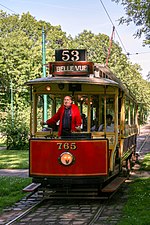Great Heaton
Great Heaton (also known as Over Heaton and Heaton Reddish) was a township in the parish of Prestwich-cum-Oldham and hundred of Salford, in Lancashire, England. It was occupied land between Prestwich and Manchester, near Heaton Park. It formed part of the "Manchester poor law Union", 1841–50, but in 1850 was included in "Prestwich poor law Union". It should not be confused with Heaton township, near Bolton, or Heaton Norris township, between Manchester and Stockport. Following the Local Government Act 1894 the township was dissolved and its area divided between the Municipal Borough of Middleton and Prestwich Urban District. In 1903 the Heaton Park area became part of the city of Manchester.
Excerpt from the Wikipedia article Great Heaton (License: CC BY-SA 3.0, Authors).Great Heaton
Sheepfoot Lane,
Geographical coordinates (GPS) Address Nearby Places Show on map
Geographical coordinates (GPS)
| Latitude | Longitude |
|---|---|
| N 53.53 ° | E -2.25 ° |
Address
Sheepfoot Lane
Sheepfoot Lane
M25 0DN , Sedgley Park
England, United Kingdom
Open on Google Maps










